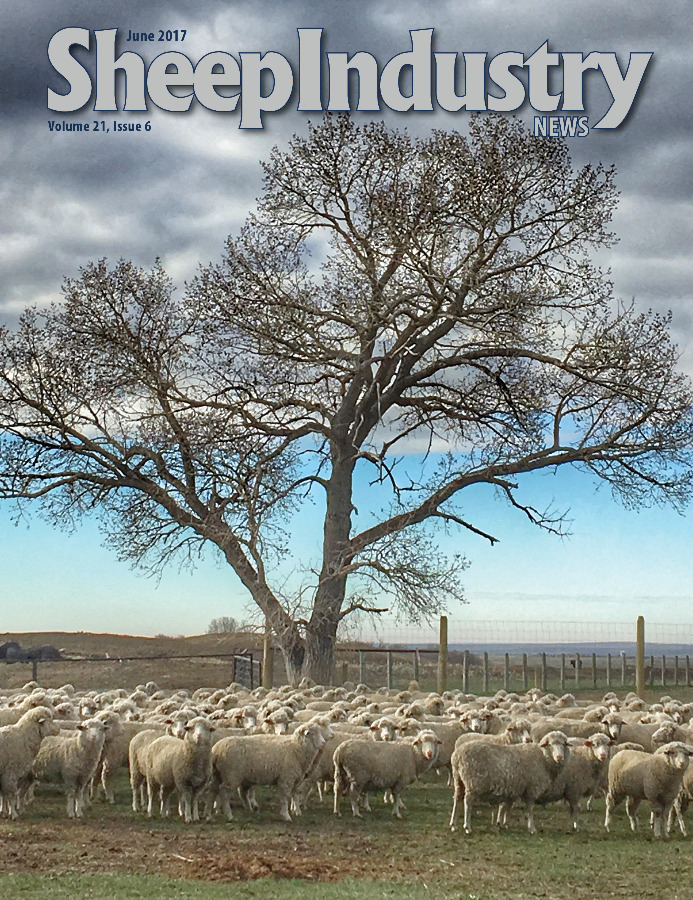CHASE ADAMS
Senior Policy and Information Director
ASI Representatives were on hand to tout the benefits of U.S. wool and help guide international discussions on the wool trade during the annual meeting of the International Wool Textile Organization on May 2-5 in Harrogate, United Kingdom.
In addition to ASI staff, U.S.-based representatives of several wool exporters and a textile mill were on hand for three days of meetings about the future of the wool industry. Anodyne, Burlington Industries/ITG, Chargeurs Wool, Keese International and Lempriere were all represented during discussions on everything from wool sustainability to sheep welfare to biosecurity. Sessions on market trends, innovations and technology, British wool farming, wool recycling, wool in interiors and more formed the basis of networking, dialogue and exchange.
For United States’ wool growers, sessions on sustainability and international biosecurity were especially critical. While IWTO involves all stages of the wool pipeline, growers’ perspectives on these issues are critical.
The sustainable practices committee focused largely on recent attacks on wool garments due to flawed sustainability metrics, especially by the Sustainable Apparel Coalition. Compared to other fibers, SAC ranks wool among the least sustainable fibers, third to cotton and silk.
Unfortunately, the SAC ranking fails to take into account the full lifecycle of wool products. Specifically, the ranking doesn’t currently consider the long-wearing attributes of wool garments, wool’s reduced footprint due to best practices and the recyclability of wool products. Wool is naturally anti-bacterial requiring less frequent washing, leading to lower water usage during a garment’s lifetime.
Wool is also ideal for helping regulate body temperature, reducing the need for additional heating and cooling, further saving energy and fuel. Finally, wool’s recyclability gives already long lasting garments another lifespan, capable of being used in a number of other consumer products. These attributes combine to make wool an environmentally sensitive product.
That is why the current international wool Lifecycle Analysis being conducted through the IWTO is critical to give environmentally conscious consumers the full story of wool’s ecological footprint. Ensuring sound-science underlies this effort and recognition of wool’s natural properties – which have made it a top fiber of choice for thousands of years across every continent – is important to every producer nation.
The international wool trade biosecurity working group also took advantage of the event to discuss preparedness plans for foreign animal disease outbreaks among grower countries. The goal is to ensure the uninterrupted trade of raw wool worldwide in the event of a major disease outbreak – such as foot and mouth disease – and discuss international vulnerabilities. Of particular concern for the South African delegation has been an outbreak of ovine rinderpest and efforts to rid flocks of the disease. PPR is a contagious disease affecting sheep and goats in central and southern Africa, the Middle East and the Indian subcontinent. South Africa has implemented a roadmap toward PPR eradication that has shown significant results.
Involvement through IWTO has been invaluable for the American sheep industry and is made possible through the U.S. Department of Agriculture’s Foreign Agricultural Services programs. The IWTO congress provides an opportunity to be part of the discussions on key wool issues, stay current on standards in raw wool testing, be updated on trends and visit with all segments of the global wool industry in one place to discuss the benefits of U.S. wool.
Through IWTO, ASI has provided a conduit to have the United States be a part of standardized wool testing methods. These efforts have proven a valuable tool in increasing the awareness of U.S. wool in manufacturing countries and participating in the international wool marketplace.
ASI remains committed to working to promote the U.S. wool clip and ensure that global trade and promotion efforts work for U.S. sheep and wool producers. Increased market development for raw wool and the promotion of consumer textiles, interiors and other uses hold tremendous potential for the industry.


